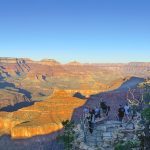
Letters | Dooda to helium
This letter is in response to the proposed helium development in the Sanostee, New Mexico, and surrounding areas.
During the community meeting on Jan. 25, 2022, in Sanostee, Melvin Smith, who supports the helium development, asked the non-supporters how they would help their community.
Mr. Smith, we are helping the community by standing up for the environment, animals, and Mother Earth. They don’t have a voice in what will happen; they cannot speak up and say, “No, we don’t want this.”
Think about how the continued drilling of helium is going to make a huge environmental impact.
In last week’s Navajo Times article, you have hataałii Goldson mention the plants and sacred sites will be impacted greatly. The sites and plants are sacred to our Diné culture and religion, and those sites and plants are going to be trampled on by heavy equipment, drills, and concrete pads that will never be removed.
The environment will never be restored by Navajo Gas and Oil, James McClure, CEO, and Board Chairman Lennard Eltsosie.
Tactius LLC drilled the Tocito Dome for several years, and according to Tactius, they have compensated Sanostee Chapter with $100,000, according to a May 16, 2021, article in the Arizona Republic.
What has Sanostee Chapter shown from receiving those funds? Nothing, and the chapter and surrounding buildings still sit deteriorating. The money they received has not improved roads in the community.
Those roads are not paved and their claim to putting millions in scholarship money for the youth is a far-fetched sales pitch. The chapter is looking only at receiving the dollar amount of $1.7 million, and that amount is not going to build you a new chapter.
During the meeting, I heard Sanostee Chapter and Navajo Nation officials state that we don’t have a say so in the helium development in the Sanostee community. As Diné people, we all have a say in this development, it affects all of us throughout the Navajo Nation.
Seth Damon, speaker of the Council, who sponsored the meeting, mentioned the Diné people are all stakeholders in the helium development. So, Diné, stand up for our environment and say dooda to helium development.
Michael Roy
Gadii’ahi, N.M.
Leaders taking undue credit
Let’s face it; the Navajo Nation economy suffers from a problem that some would call an investment deficit disorder.
Year after year, leadership after leadership, including for both the president’s office and from the Council, we have spent heavily on short-term consumption while ignoring many of the Diné Nation (Navajo people’s) long-term and critical needs.
It’s a shame, but if you look at other tribes, they look more progressive and as a result, now have implemented high-tech government infrastructural systems and less expensive cellphone service. They have clean drinking water and safe and smart schools. They have plenty of homes and nontoxic communities, so the elders and young people feel safe and get ahead, certainly not left alone or feeling helpless.
Their tribal government systems do not operate in seclusion as if they are disconnected from the needs of the people and communities. And they are more successful electing tribal members for state and federal leadership offices.
The relatively obsolete and, by most standards, the state of Navajo infrastructure acts like a tax on our economy and a drag on our well-being. It slows down the upward movement of people and goods and reduces the quality of everyday life.
While here at home, we’re watching our president spend his time trying desperately to take credit for other people’s leadership. For example, the approval of the Hardship Assistance of $2,000 for adults and $600 for youth. Mr. President, you did not have anything to do with the approval.
You and your vice president sat back and chose to snub calls from Navajo people asking you for help. Indeed, the Council heard them and moved to pass legislation, which you grudgingly signed (as explained by your staff) simply because you would not get credit for it.
I understand from social media that you are also handing out meals at various checkpoints throughout the reservation. If anything, it makes you look scared using tribal funds and resources to conduct your campaign.
It’s too bad the central “engine” you are relying on to drive the economy are COVID-19 funds. Unfortunately, the engine you have now don’t look like they can be engines for not too far in the future.
No doubt one of the reasons that Navajo people latched on to “COVID funds” is that it’s very tangible. Because of your lack of real leadership, it’s very hard to know in advance what the engine of the Navajo economy is going to be, going forward, because you and your vice president don’t seem to understand what you should be doing to be better prepared.
That uncertainty is a challenge in itself — people would much rather believe that whatever industry is fueling the economy will keep doing so in the future.
Whatever driving force emerges, if we were making smart investments in a range of areas like government efficiency, investing in professional development for our tribal workforce, increasing tribal revenues, improving our health and education system, exploring technological advances. The economy can, in fact, do better going forward than it has in the past.
If you look for signature projects that will help Navajo people understand what the COVID-19 funds are doing, you will struggle to find them.
The funding is not likely to improve our roads or construct supermarkets and grocery stores to cut the money going off-reservation and into border towns.
It will not create thousands of high-paying jobs or top-notch schools or colleges, nor will it improve our government efficiency or increase tribal revenues.
I hope for those of you at home who feel left behind and forgotten in an economy that doesn’t seem to work well for us, remember to register to vote, and let’s start identifying a candidate that has leadership qualities better and more promising than what we’re seeing. We need a change!
Donald Benally
Shiprock, N.M.
Worst suppression schemes
Navajo Nation Council passed amendment No. 0222-21, which is clearly a Navajo Voters Suppression bill. I’m responding to the Navajo Times article “Election Office prepping for Election year” published on Feb. 10, 2022.
This voter suppression bill restricts Navajo voting registration by reducing time by 10 days, taking away 10 days for Navajo people to register. The purpose of this change is to relieve some burdens on Navajo Election Office and make it less stressful for them by taking away the rights of Navajo people to vote.
Navajo Election Office also made it harder to register to vote. Now it requires five documents that include: 1) Certificate of Indian Blood, 2) Valid state driver’s license, 3) Valid state ID card, 4) Valid tribal ID card, and 5) Social Security card.
We all know how hard it is to get a state driver’s license because we have no street address inside the Navajo Nation. It is hard to get a tribal ID card because that office is always closed and it’s located in Window Rock, and Social Security card is also not easy to replace if you lose it.
When it comes to what a tribal Council wants, they waive tribal laws to do it, like former Election Administration Director Edison Wauneka. He is now a Navajo Nation Councilman, even though the Navajo tribal election laws prohibit any tribal Council member from forcing a referendum vote to increase the Council members to 48 onto the 2022 Navajo Nation Election. Navajo Council let Councilman Wauneka introduce this illegal bill, and Navajo Council passed it at this past Winter Council session 2022.
According to Navajo Times, the new Election Administration director, Rosita Kelly, pointed out all election office buildings across the Navajo Nation are so old, computers and software are outdated, and the database is about to crash any day. These problems are the responsibility of the Navajo president and the 24-member tribal Council. Still, they refused to appropriate any funds to fix these problems for many decades, and they will do anything to bailout tribal enterprises with the Navajo people’s money.
For many decades Navajo tribal leaders do not understand it’s them that they suppress and oppress Navajo people by not providing street addresses and liberty. Still, tribal leaders make us believe it’s the federal and state government suppressing Navajo Nation.
This Navajo Voters Suppression bill will make it harder for Navajo people that work for a living in Phoenix, Albuquerque, Denver, California, surrounding border towns, and other places. Navajo people living inside the poverty-stricken Navajo Reservation lack transportation to travel to BIA Agency towns to register or travel to Window Rock to get a tribal ID card. This is one the worst suppression schemes I seen as of today.
Please call your delegate and Navajo Nation President Jonathan Nez.
Lester Begay
Crownpoint, N.M.
Growth without economic growth
Public safety has always been a central issue with me. As a Kayenta Township commissioner, I would always ask myself how we create more jobs, bring more business and improve the economy? I came back to one central statement at the end of all my thinking. We need to improve public safety first.
Why? Because if we want good businesses in our communities, the community must be safe. We need to invest in better public safety. That means a community needs to have working fire hydrants, labeled roads, efficient communication systems, low response times, well-provisioned fire departments, an adequate number of public safety officers, good prosecutors, and an efficient court system.
Further, increased public safety means more funding allocations.
On March 7, 2019, President Nez testified before the U.S. House of Representatives on Appropriations Subcommittee on Interior, Environment, and Related Agencies about Public Safety. Amongst much of the information he provided, one of the items that stood out to me was these statements: “The Nation also has difficulty gathering specific information to prosecute criminal activity. The Nation does not have funding to hire medical examiners, and deceased individuals have to be transported long distances to state autopsy facilities. The Nation also does not have a crime lab. Evidence for federal crimes can be submitted to the federal crime lab; however, there is no lab facility to analyze evidence in a case that is purely under Navajo jurisdiction.”
I would like to say that things have changed since that testimony. It’s been three years, and I want to say that the Navajo Nation hired a medical examiner or built a crime lab.
Sadly, in three years, things have not changed. How do I know?
On the Nov. 11, 2021, Navajo Times edition, writer Rima Krisst provided insight on Law and Order Committee Chairwoman Eugenia Charles-Newton’s visit to D.C. (“Charles-Newton lobbies DC for Public Safety Needs”).
Much of the numbers Charles-Newton provided to D.C. were almost the same as the Nez 2019 testimony.
Violent crime in the Navajo Nation remains four times the national average. Navajo Nation has 120 officers on patrol, whereas during the Nez testimony in 2019, he said there were 205 patrol officers. So we lost 85 officers in three years!
Charles-Newton also mentioned that the Navajo Nation Council established a Department of Medical Examiner but hasn’t hired anyone because the salary is not attractive.
We also gained from President Nez’s 2019 testimony that the Navajo Nation would need an additional $74 million every year to sufficiently supply the public safety sector. That’s an additional $74 million every year!
We should be concerned about those numbers. Can we do better? If those numbers indicate the performance of our elected leaders, we should be very concerned.
That information tells me that public safety funding is not a top concern. How can our law enforcement folks be effective when they lose one-third of their colleagues in three years? I wonder what the allocations for public safety are or have been?
What I hear is, “We need more revenue!” We need more businesses, and our government needs to do more to make the Navajo Nation safer and more attractive for businesses.
The Navajo Nation should want to be safer and to be able to have our economy compete with surrounding states. We should want to be the best!
The Navajo Nation is playing like a freshman team going to the state tournament ranked last against the Four Corner states varsity teams to use a basketball analogy for the economy. Our best players, NGS and Kayenta Mine, were removed because people complained to the school board that they were playing too much, so the coach removed them.
The Navajo Nation goes into the state tourney without two of its best players. Our fans aren’t excited anymore and leave as they find out that the Navajo Nation could be better but keep doing things to keep themselves down.
Who do we point the finger at when teams aren’t playing well? The players? The fans? Most of the time they point to the head coach. Who is the Navajo Nation head coach?
OK, now back to the discussion on public safety. I want you to also think about “public safety” as police departments and fire departments. Homes and businesses depend on fire departments for emergency response because insurance companies determine rates for homes and businesses based on an ISO fire rating. The worst possible rating is a “10” and the best is “1”.
A communities ISO fire rating is impacted by how well the local fire department can protect the community.
You should ask what the ISO fire rating is in your community. Then ask your leaders, how do we improve the ISO rating? The ISO fire rating should be on the Navajo Nation website somewhere. Sadly, it is not. Nowhere to be found.
I Googled the following cities for their ISO rating:
- Farmington has an ISO rating of “3”.
- City of Flagstaff has an ISO rating of “2”.
I am proud to say that the Kayenta Township has an ISO rating of “6”. That’s because Kayenta Township commissioners invested more into their fire department with the purchase of new fire department vehicles and a ladder truck. Response times were decreased, and people are safer. Kayenta tax dollars at work!
Kayenta wants to be better, and they are continuing to make investments to create a safer community. I believe all communities want the same thing, and they want safer communities and good businesses.
With all that I have said, I would love the Navajo Nation to be the best at everything they do. The question to you is, do we keep doing the same things and expect different results? Or do we make an effort to make changes until we find the right combination that makes us winners? Change the coach? Or change the lineup?
The bottom line is public safety is essential to a good economy and a safer community.
Good luck to all the Navajo Nation teams going to the state tourneys. And congratulations!
These thoughts are my own and are not reflective of my employer.
Jarvis Williams
Kayenta, Ariz.

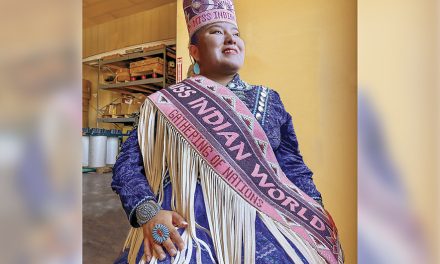
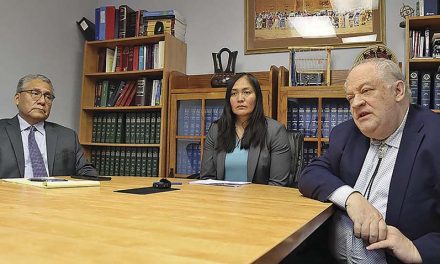
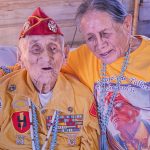
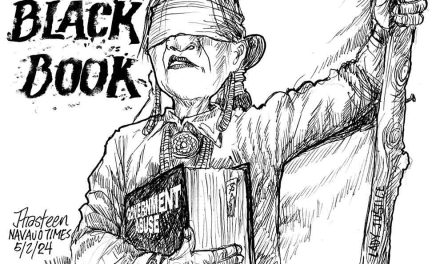



 Highway 264,
Highway 264, I-40, WB @ Winslow
I-40, WB @ Winslow